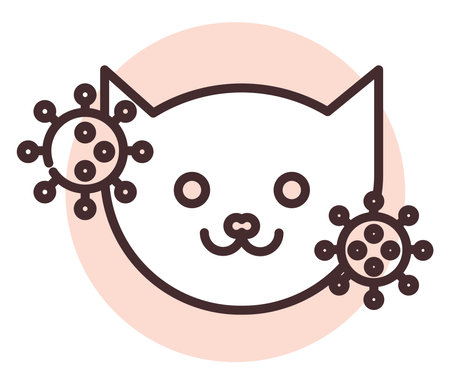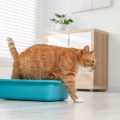Understanding UK Cats’ Eating Habits
In the heart of British homes, cats are more than just pets—they are beloved family members, each with unique personalities and preferences. Understanding the eating habits of cats in the UK is crucial for their health and wellbeing. Whether you share your home with a regal pedigree or an adventurous moggie, dietary patterns can vary, but some trends remain consistent across British households.
Generally, cats are known for being grazers, preferring to eat small amounts throughout the day rather than consuming large meals at set times. However, the typical routine often differs between pedigrees and moggies due to lifestyle factors, environment, and owner preferences. Many UK cat owners offer a mix of wet and dry food, aiming to balance nutrition and flavour variety. The table below outlines common feeding practices among British cat owners:
| Cat Type | Preferred Diet | Feeding Frequency | Common Treats |
|---|---|---|---|
| Pedigree | High-quality wet & dry mix | 2-3 scheduled meals daily | Specialist treats, fresh fish |
| Moggie | Commercial wet & dry food | Free-feeding or 2 meals daily | Cat biscuits, chicken pieces |
Despite these differences, most UK cats benefit from a routine that caters to their instinctual need for frequent, smaller portions while providing consistent access to fresh water. With attention to their preferences and dietary needs, British cat owners can create a nurturing mealtime environment that supports both physical health and emotional comfort.
2. Benefits of a Consistent Feeding Routine
Establishing a regular feeding schedule for your cat is more than just a daily habit—it’s an essential part of supporting their overall health and wellbeing, especially for cats living in the UK’s unique climate and lifestyle. Cats thrive on routine; structured meal times help regulate their digestive system, reduce anxiety, and prevent unhealthy snacking throughout the day. By offering meals at set times, you also have better control over portion sizes, which is crucial in maintaining your cat’s ideal weight and preventing obesity—a growing concern among British pets.
Supporting Feline Health and Wellbeing
Consistency helps regulate a cats metabolism and energy levels, making them feel secure and content in their home environment. This is particularly important during the UKs colder months when indoor activities may increase and outdoor exploration decreases. Regular feeding routines also make it easier to spot changes in appetite, which can be an early indicator of health issues requiring prompt attention.
Helping Maintain an Ideal Weight
Feeding cats at consistent times each day prevents overeating and discourages begging behaviour—a common challenge in many UK households. With predictable meal schedules, you can monitor how much your cat eats and quickly identify any fluctuations that might suggest underlying problems.
Key Benefits at a Glance
| Benefit | Description |
|---|---|
| Weight Management | Prevents overfeeding by controlling portions |
| Digestive Health | Supports regular digestion with set meal times |
| Mental Wellbeing | Reduces stress by providing routine and predictability |
| Health Monitoring | Makes it easier to notice changes in appetite or behaviour |
A Thoughtful Approach for UK Cat Owners
By adopting a consistent feeding schedule tailored to your cat’s needs and the rhythms of British life, you create a nurturing home where your feline companion can flourish—both physically and emotionally.

3. Navigating British Cat Food Choices
The UK offers a delightful array of cat food options, each influencing how pet owners approach their feline’s feeding schedule. From trusted high-street staples to artisanal boutique blends, British cat parents are spoilt for choice, but this abundance also requires thoughtful selection to suit both lifestyle and the cat’s dietary needs.
High-Street Brands vs Boutique Blends
Many households rely on established high-street brands for convenience and consistency. These brands, found in supermarkets like Tesco or Sainsbury’s, offer a range of wet and dry foods formulated for balanced nutrition. On the other hand, boutique blends—often available through independent pet shops or online—highlight locally sourced ingredients and unique recipes tailored to specific feline preferences or sensitivities.
| Type | Typical Features | Effect on Feeding Schedule |
|---|---|---|
| High-Street Brands | Widely available, affordable, consistent formulations | Easy to maintain regular meals; predictable stock availability |
| Boutique Blends | Premium ingredients, specialised diets, smaller batch production | May require more planning; some blends best served at set times |
Adapting Schedules to Suit Your Cat’s Needs
Cats thrive on routine, so whether you opt for a mainstream or boutique option, aligning your chosen food with a regular timetable is essential. Wet foods may necessitate more frequent servings due to freshness, while premium dry kibbles can allow for scheduled portioning throughout the day. Observing your cat’s response to different textures and flavours will help you refine not only what you serve but when you serve it.
The British Touch: Local Ingredients and Seasonal Specials
A growing trend among UK cat owners is seeking out foods that celebrate local produce—think Scottish salmon or Welsh lamb. These seasonal offerings can add variety but might require subtle adjustments to your feeding routine. Keeping an eye on ingredient sourcing helps ensure your cat benefits from both nutritional balance and a taste of Britain’s finest fare.
4. Practical Tips for Establishing a Routine
Creating a consistent feeding schedule for your cat in the UK doesnt have to disrupt your daily life. In fact, with a bit of planning, it can enhance both your pet’s wellbeing and your own peace of mind. Here are some practical, UK-centric tips to help you establish—and stick to—a regular routine, even when juggling work, school runs, or weekend getaways.
Embrace British Punctuality
British life often revolves around a set timetable—whether it’s the 9-to-5 workday or the Sunday roast tradition. Use this national knack for punctuality to anchor your cat’s meals at roughly the same time each day. Cats thrive on predictability, so try to feed them just before you leave for work and shortly after you return.
Work with Your Schedule
If your hours vary or you’re often out and about, consider investing in an automatic feeder. These clever gadgets can be programmed to dispense meals at specific times, ensuring that even on busy days or late commutes, your feline friend isn’t left waiting.
Sample Feeding Schedule for Busy Brits
| Time | Activity |
|---|---|
| 07:30 | First meal (before work/school) |
| 18:00 | Second meal (after returning home) |
Get the Whole Household Involved
If you share your home with family or flatmates, keep everyone in the loop. A shared kitchen chalkboard or a note by the food cupboard can help ensure consistency and avoid double-feeding mishaps.
Treats and Table Scraps—A Word of Caution
The British love for sharing nibbles is well-known, but remember that too many treats outside meal times can disrupt your cat’s routine and health. Stick to scheduled meals as much as possible, reserving treats for special occasions or training rewards.
Simplify Routine During Holidays
If you’re away for a short break or enjoying a bank holiday, ask a neighbour or local pet-sitting service to stick closely to your usual feeding times. Many UK communities are pet-friendly, making it easy to find reliable help who understands the importance of routine.
5. Common Challenges and Solutions
Creating a regular feeding schedule for your cat can be a lovely routine, but UK cat owners often face unique challenges that disrupt consistency. Busy workdays, last-minute travel plans, and the British climate can all affect how and when our feline companions are fed. Fortunately, there are practical solutions tailored to UK lifestyles that help keep mealtimes predictable and stress-free for both you and your cat.
Typical Hurdles for UK Cat Owners
Challenge |
Description |
Practical Solution |
|---|---|---|
Long Working Hours |
Many Brits juggle demanding jobs or commute long distances, making it tricky to maintain set meal times. | Consider investing in an automatic feeder with a timer function—these are widely available in the UK and ensure your cat is fed on time even when you’re away. |
Unexpected Travel |
Whether it’s a weekend getaway to the Lake District or an impromptu business trip, travel can throw feeding schedules off balance. | Enlist a trusted neighbour or use local pet-sitting services; many communities have reliable “cat sitters” familiar with British breeds and routines. |
British Weather |
The unpredictable weather means indoor cats may need more frequent feeds during cold snaps, while outdoor cats might miss meals if kept inside by storms. | Keep extra supplies of wet and dry food at home, and adjust portions seasonally. Using insulated bowls can also keep food fresh during chilly spells. |
Shared Households |
With many people in the UK living in shared homes or flats, communication lapses can lead to double-feeding or missed meals. | Create a visible feeding rota on the fridge or use shared digital calendars so everyone knows when the cat has been fed. |
Culturally Relevant Tips for UK Cat Owners
Embracing UK-specific habits can make sticking to a schedule easier. For instance, incorporating your cat’s feeding times into daily rituals like morning tea or evening telly helps anchor their routine within yours. Additionally, sourcing locally produced cat foods supports British farmers and ensures your pet enjoys fresher ingredients. Remember: consistency isn’t about perfection—it’s about creating a comforting rhythm for you and your beloved feline, even amidst life’s unpredictability.
6. Enriching Mealtimes with British Home Comforts
Creating a thoughtful and inviting feeding station is one of the simplest ways to make your cat feel truly at home, especially in the cosy, characterful settings of UK households. Cats, much like us, appreciate consistency and comfort during mealtimes. By combining practical feeding schedules with charming British home décor, you can transform their daily routine into a delightful ritual that nurtures both body and soul.
The Perfect Feeding Station: Blending Style and Function
Consider the location of your cat’s feeding area—somewhere quiet yet accessible, away from noisy appliances or busy walkways. Elevate this space by incorporating touches of quintessential British style, such as ceramic bowls reminiscent of classic English pottery or placemats featuring countryside motifs. Not only do these choices add aesthetic appeal, but they also provide a sense of familiarity and security for your feline friend.
Key Elements for a Cosy Cat Dining Area
| Element | British-Inspired Suggestions | Benefits for Your Cat |
|---|---|---|
| Bowl Material | Ceramic or stainless steel with heritage patterns | Hygienic, sturdy, and less likely to cause whisker fatigue |
| Feeding Mat | Cotton or linen mats with floral or tartan designs | Keeps area tidy and adds homely touch |
| Location | Quiet nook near natural light, perhaps by a bay window | Reduces stress and encourages calm eating habits |
| Treat Jar | Mason jars or vintage tins on a sideboard | Adds charm while keeping treats fresh and organised |
Creating Rituals with British Flair
A regular feeding schedule paired with a thoughtfully arranged environment fosters trust and well-being in cats. You might even add small rituals—such as gently calling your cat at mealtimes or offering a special Sunday treat in a decorative dish—to further echo the warmth of British family traditions. These little acts not only strengthen your bond but also support your cat’s emotional health.
Nurturing Well-being Through Design
Ultimately, enriching your cat’s mealtime with British home comforts is about more than just aesthetics; it’s an expression of care that resonates through their daily life. By thoughtfully curating their dining experience, you create a sanctuary where they can dine contentedly—reflecting the best of UK living for both pets and people alike.


